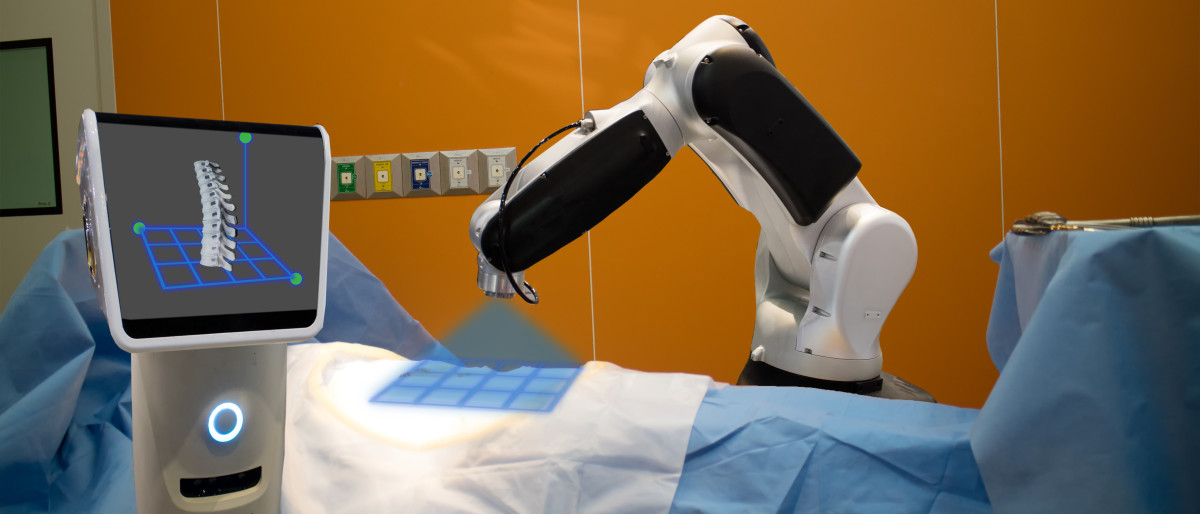Surgical robots - Science-fiction or medicine of the future
Surgical robots have become increasingly important in recent years. They support surgeons in complex interventions and thus enable them to work more precisely and faster. The use of surgical robots has many advantages for patients, doctors and clinics and opens up revolutionary possibilities for medicine. In our new blog post, we want to show the technology behind the surgical robots and explain what special features are within medical technology design.
Surgical robots - Definition and structure
Surgical robots have become an indispensable part of medical technology and mainly belong to the category of medical robots. The use case for surgical robots is precisely defined in the OR, in contrast to all medical robots that are used in a wide variety of medical sectors. While medical devices usually work completely independently and automatically outside of the operating room, surgical robots are actively operated and use intelligent software to carry out the desired movements precisely. Surgical robots only act as assistants and are therefore mainly used when human abilities reach their limits. The number of surgical robots in hospitals and clinics is constantly increasing. However, a large part of the population is still skeptical about the idea of robots being involved in invasive surgeries that can potentially be fatal. In particular, it seems to be the question of ethics, that is of most importance when it comes to the use of surgical robots.
In terms of size and shape, surgical robots can sometimes differ greatly. However, they often have a similar structure in terms of their components. The basis is the control unit and a manipulator, which embodies the robot arm. The robot arm is comprised by various segments with joints, sensors, drive systems and an effector. This effector is often understood as the link between the surgical robot and its surroundings, as it interacts with the human body. The control of the surgical robot links the robot with the user and thus represents an interface between human and technology. The surgeon works closely with the surgical robot during invasive procedures and retains control over what is happening at all times. With the help of a joystick, a console or similar control elements, the movements of the treating doctor are translated by intelligent software and then implemented. This process is called telemanipulated control.

Use cases of a surgical robot
Surgical robots are particularly useful in the context of minimally invasive and keyhole surgeries. These generally focus on small incisions, sometimes only a few millimeters in size. The advantages of the surgical robot come into play especially with such delicate or small-scale work, as its precision often exceeds the capacity of human skills. Using a surgical robot aims to protect the patient from postoperative issues and cosmetic problems like scarring as best as possible.
The use of surgical robots offers many important advantages. Depending on the design, individual elements of the robot, such as manipulators, can move completely freely in space. This allows them to perform movements and assume positions that have proven problematic for humans. Important insights are generated through integrated image processing and camera settings. The doctor controls the movements and actions of the surgical robot using an external control panel, allowing him to remotely control the operation. The latter is connected to a viewing visor, for the treating doctor to see exactly what is happening at all times. In addition, surgical robots work independently of mental, physical and emotional impulses, which enables the highest level of accuracy not only in terms of space but also in terms of time.
A well-known variant of this surgical assistance is the Da Vinci surgical robot, which is suitable for a wide range of surgical applications. Flexible configurations offer improved ergonomics and usability of the device. Additionally, the system architecture of Da Vinci's surgical robot allows it to be upgraded, which means the application can be continuously improved. The modern system offers a high-resolution and spatial visualization. Furthermore, the integrated table motion enables a versatile and flexible way of working. The setup automation with the surgical robot's laser crosshairs also makes docking much easier and thus improves surgical efficiency. This makes the surgical robot from Da Vinci suitable for numerous applications.
Advantages of a surgical robot
Surgical robots offer many advantages in modern medicine, since they relieve the treating physicians of tasks that exceed their natural capacities. This increases the effectiveness of the surgery while minimizing the risk of postoperative discomfort or even malpractice. It should be noted that the surgical robot in no way acts independently, but merely represents an assistance tool for the attending physician. The ethical concerns about a completely autonomous surgical robot seem to be too great. And so, for the time being, surgical robots are merely an aid.
Should you have any further questions about surgical robots, please feel free to contact us at any time. We look forward to your message and will reply to you as soon as possible.
Read next:
